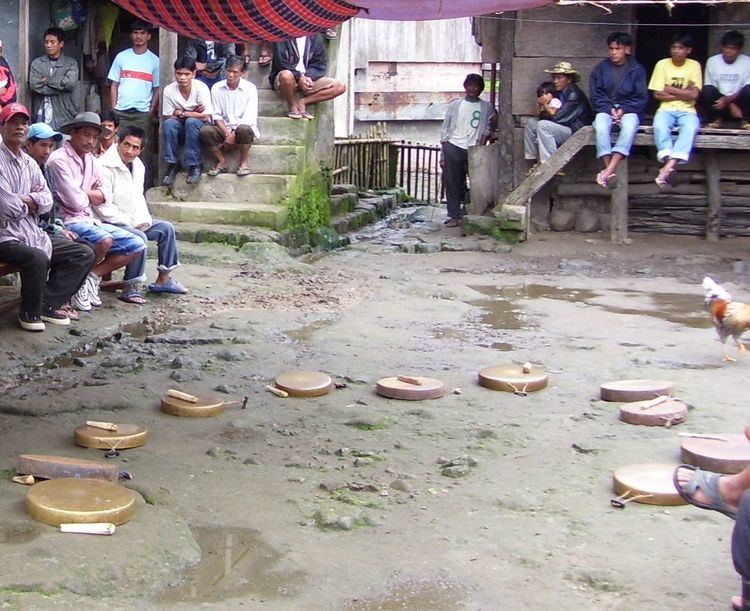 | ||
Gungsa or gangsa are flat sided lipped gongs classified as of the suspended type, though they are often played horizontally on the thighs. They are common in the Cordillera highlands of Luzon in the northern Philippines.
Most gungsa are brass although some more recent ones, especially from the end of the 19th century, are cast iron. The iron ones are generally considered inferior to the "gold" ones.
Gungsa are endemic throughout the Cordilleras in Luzon, the main island of the northern Philippines. They seem to have been there for centuries, and some families still treasure family heirlooms from 8 or 9 generations ago. These parts of the Philippines were not subdued by the Spanish during their four century claim over the Philippines.
Fukkien traders appear to have been active in the Cordilleras before the Spanish imperium, and to have continued through the Spanish attempts to rule. Current thinking is the Fukkien traders brought the flat sided lipped gongs from China to sell to the Cordillera people who paid in gold.
Gungsa are usually found in sets of five or six, based on the pentatonic scale. They can be tuned by an expert with a hammer. Sets of eight or more are also common, but are still based on the pentatonic scale also thought to have been brought from China.
Current (2008) retail price in Baguio City for a new set of five in brass is about 78,000 pesos.
The people of Mountain Province use gungsa during all major traditional celebrations and its use does not seem in danger of being lost. In the more remote barios of Kalinga Province, gungsa are still essential for all community celebrations, unless someone has died recently, when the gungsa remain silent.
Methods of playing gungsa vary from tribe to tribe and can be quite intricate when played by masters. Unlike the Southern Philippines, playing gongs in the Cordilleras is a male duty. Girls are often taught to play gungsa at school, alongside the boys, but do not play at community functions. They usually dance to the sound of the gungsa.
